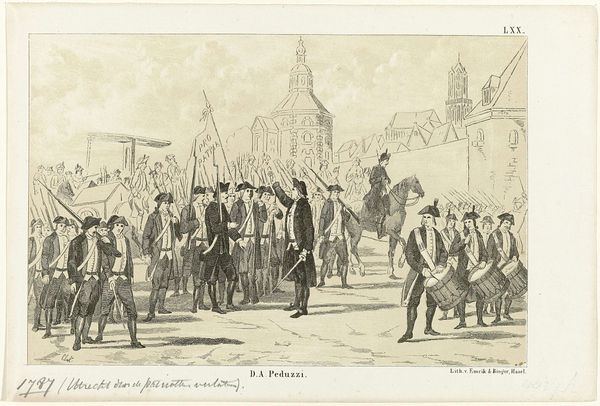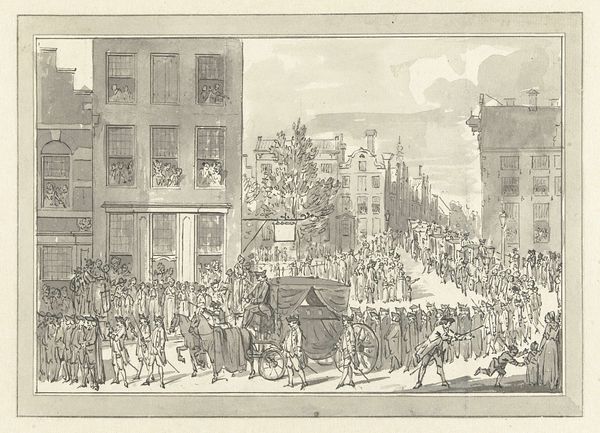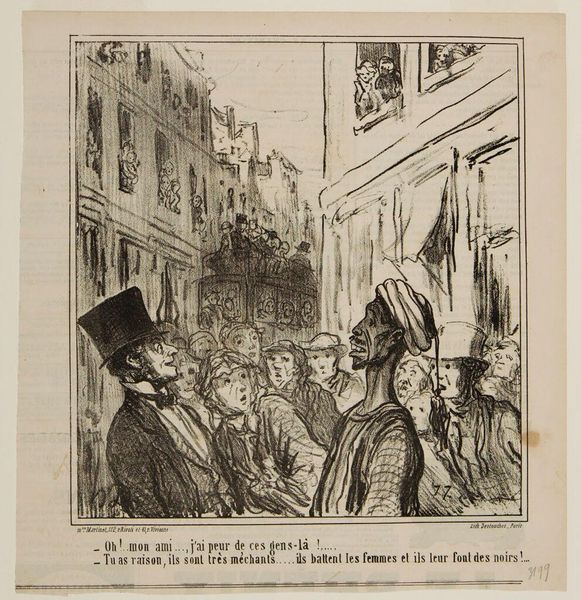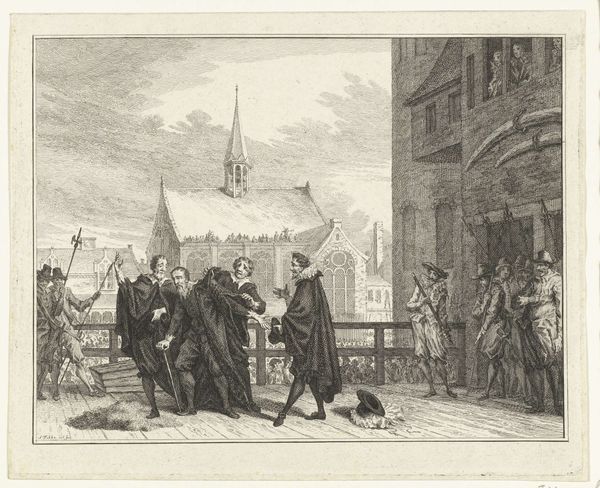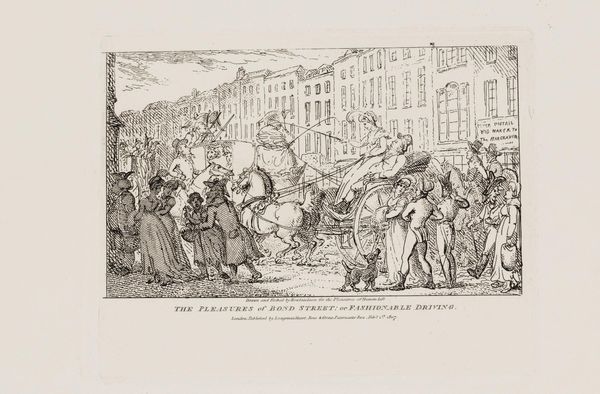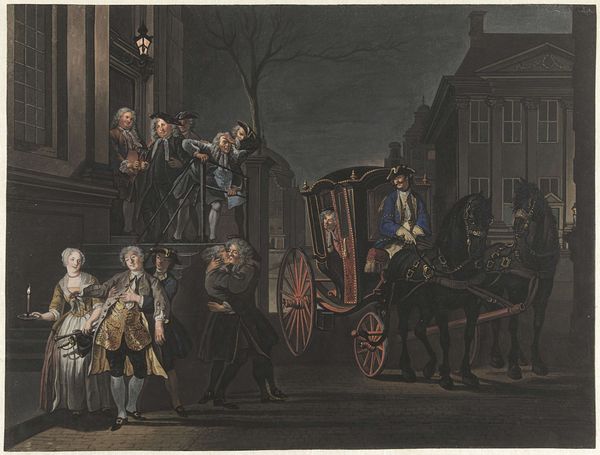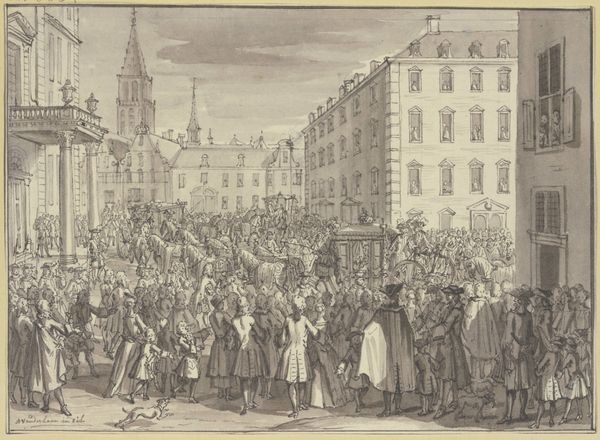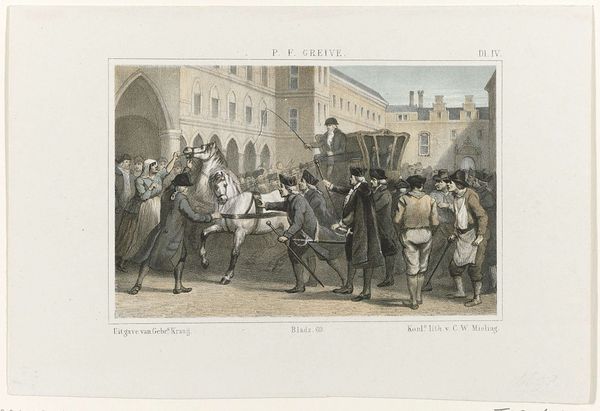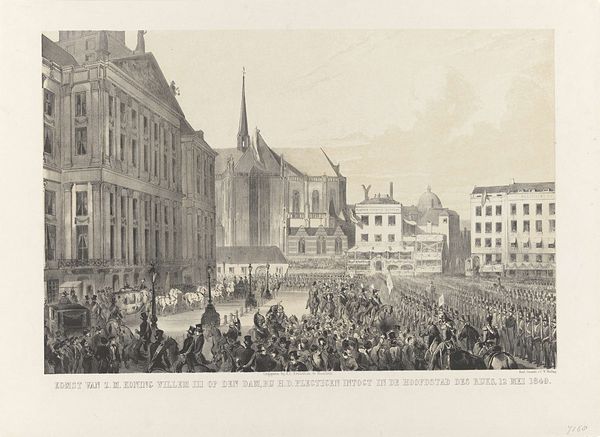
Dimensions: height 164 mm, width 244 mm
Copyright: Rijks Museum: Open Domain
Editor: Here we have an engraving, “Aankomst van Willem IV te Amsterdam, 1748,” or “Arrival of William IV in Amsterdam, 1748,” made sometime between 1853 and 1861. The composition seems dominated by very fine lines creating incredible detail. How would you describe what you see? Curator: From a formal perspective, the meticulous linework creates a rich surface texture that defines form and space. Consider the way the engraver utilizes hatching and cross-hatching to articulate the folds in the clothing, differentiate between textures like the cobblestone street versus the smooth carriage, and, notably, to sculpt the figures. Does the density of the lines contribute to a hierarchy of importance, do you think? Editor: I suppose the greater detail brings our eyes toward the coach, making the people seem secondary. It's interesting how the artist guides our focus through line work. Are there specific techniques that draw attention? Curator: Notice the contrast between areas of dense linework, creating deep shadows, and relatively bare areas which produce a sense of light and volume. How does that interplay influence your interpretation? Editor: That contrast really highlights the three-dimensionality. It also sets a certain rhythm, almost a pulse, to the artwork, which emphasizes the liveliness of the depicted scene, in spite of the rather aged print. Curator: Precisely. The formal elements elevate it beyond a simple depiction of an event. It allows for sustained visual exploration. I wonder how we can further extrapolate these design strategies to better consider function? Editor: It's impressive how focusing on those design strategies illuminates a print like this, far beyond just its historical subject.
Comments
No comments
Be the first to comment and join the conversation on the ultimate creative platform.

